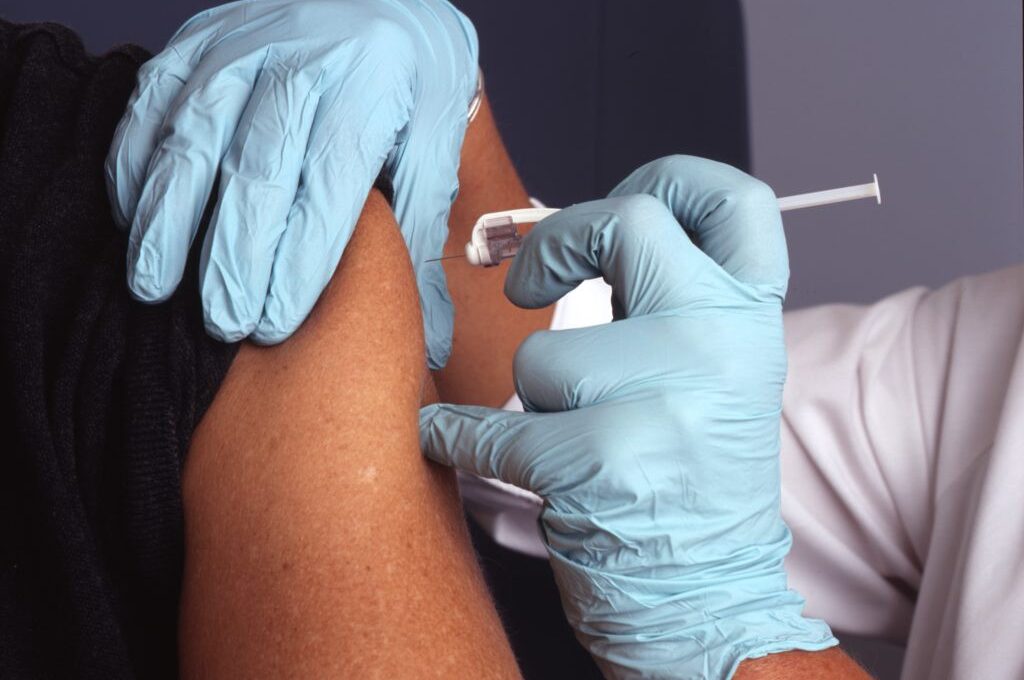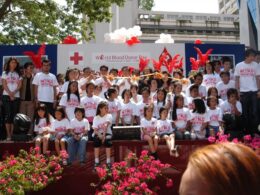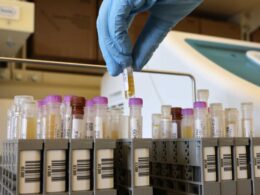Institute for Health Tranformation (inhealth)
for continous transformation & digital health
Joaquim Cardoso MSc
Founder and Chief Researcher & Editor
December 22, 2022
Source:
Health Policy Watch
Megha Kaveri
22/12/2022
The World Health Organization (WHO) has recommended shifting from a two-dose to one-dose vaccine regimen against the Human Papillomavirus (HPV) …
… something that could help expand vaccine coverage amongst millions of girls and young women in lower-income regions where HPV is most prevalent, as well as saving costs.
According to the new WHO recommendation, based on findings by WHO’s Strategic Advisory Group of Experts on Immunization (SAGE), the new single-dose schedule provides “comparable efficiency and durability of protection” as the erstwhile two-dose vaccine regimen for girls and young women between the ages of 9 and 20 years old.
According to the new WHO recommendation, based on findings by WHO’s Strategic Advisory Group of Experts on Immunization (SAGE), …
… the new single-dose schedule provides “comparable efficiency and durability of protection” as the erstwhile two-dose vaccine regimen for girls and young women between the ages of 9 and 20 years old.
An independent advisory group of the WHO had also made a similar recommendation of an alternative single-dose scheduling in April 2022. also made a similar recommendation of an alternative single-dose scheduling in April 2022.
The knock-on benefit is that the shift to a single-dose vaccine should help countries expand immunization coverage more affordably, as well as simplifying the vaccination process for hundreds of millions of girls and young women.
For women older than 21 years, WHO continues to recommend the two-dose regimen with the second dose within a six-month interval.
Vaccination of boys is recommended where feasible, WHO added in its first update of recommendations on HPV vaccination since 2017.
For women older than 21 years, WHO continues to recommend the two-dose regimen with the second dose within a six-month interval.
Vaccination of boys is recommended where feasible, WHO added in its first update of recommendations on HPV vaccination since 2017.

Recommendation ‘timely” in light of decline in HPV vaccination coverage during pandemic
“The position paper is timely in the context of a deeply concerning decline in HPV vaccination coverage globally,” , in a press release Thursday.
“Between 2019 and 2021, coverage of the first dose of HPV vaccination fell by 25% to 15%. This means 3.5 million more girls missed out on HPV vaccination in 2021 compared to 2019.”
“Between 2019 and 2021, coverage of the first dose of HPV vaccination fell by 25% to 15%. This means 3.5 million more girls missed out on HPV vaccination in 2021 compared to 2019.”
HPV vaccines prevent sexually-transmitted cervical cancer, which consists of 95% of the cervical cancer cases in women. Cervical cancer is the fourth most common type of cancer in women.
According to the WHO/SAGE analysis, the efficacy of a single dose of HPV vaccine against “incident persistent high-risk (HPV16/18) infection” was 97.5% for ä single vaccine dose and a double dose alike at 18 months post-vaccination in a randomized open-label trial of 930 females aged 9–14 years, who received 1, 2 or 3 doses of vaccine.
At 24 months post-vaccination, over 97.5% of participants in all dose groups for both vaccines were seropositive.
According to the WHO/SAGE analysis, the efficacy of a single dose of HPV vaccine against “incident persistent high-risk (HPV16/18) infection” was 97.5% for ä single vaccine dose …
“Immunobridging showed that a single dose of HPV16/18 produced antibody responses that were non-inferior to those in studies where single-dose efficacy was observed,” WHO reported.

Women living with HIV have 3–4 times higher rates of HPV infetion
Based on a 2010 meta-analysis, the global HPV prevalence (all types) among adult women is estimated at around 12%, according to data reported in the recent WHO findings.
The highest prevalence was in subSaharan Africa (24%), followed by Latin America and the Caribbean (16%), Eastern Europe (14%), and SouthEast Asia (14%).
Based on a 2010 meta-analysis, the global HPV prevalence (all types) among adult women is estimated at around 12%, according to data reported in the recent WHO findings.
A systematic review of HPV prevalence in sub-Saharan Africa found that women living with HIV had a higher prevalence of HPV (54%) and of co-infections with multiple types (23%) than HIV-negative women.
A meta-analysis in low- and middle-income countries (LMICs) found an overall HPV prevalence of 63% and a prevalence of high-risk HPV types of 51% among women living with HIV.
A systematic review of HPV prevalence in sub-Saharan Africa found that women living with HIV had a higher prevalence of HPV (54%) and of co-infections with multiple types (23%) than HIV-negative women.

Cervical cancer was diagnosed in an estimated 570,000 women across the world in 2018, causing the deaths of around 311,000 women that year, WHO estimates.
In 2020, the World Health Assembly adopted the Global Strategy for Cervical Cancer Elimination.
That strategy aims to have 90% of the girls in the world fully vaccinated against HPV by the age of 15, by 2030; the primary target group for HPV vaccination are girls 9–14 year old — before they become sexually active.
According to the WHA strategy, by 2030, 70% of women worldwide should also have been screened for HPV by the age of 35, and then again by the age of 45.
And 90% of the women with pre-cancer or invasive cancer should be treated or managed.
WHO Member States must meet the 90–70–90 targets by 2030 to be on track to eliminate cervical cancer within the century.
Image Credits: National Cancer Institute, National Cancer Institute on Unsplash.
Originally published at https://healthpolicy-watch.news on December 22, 2022.












